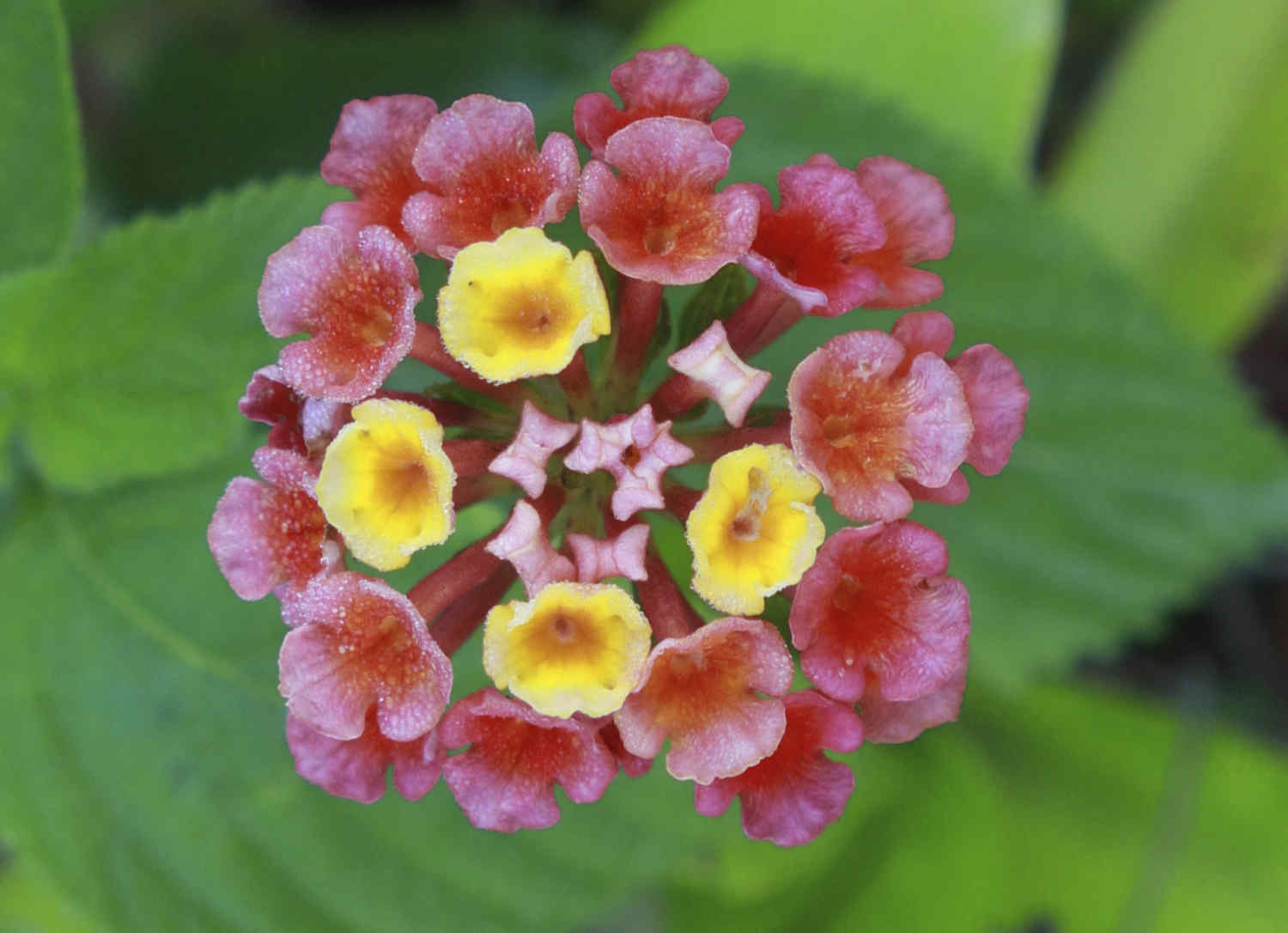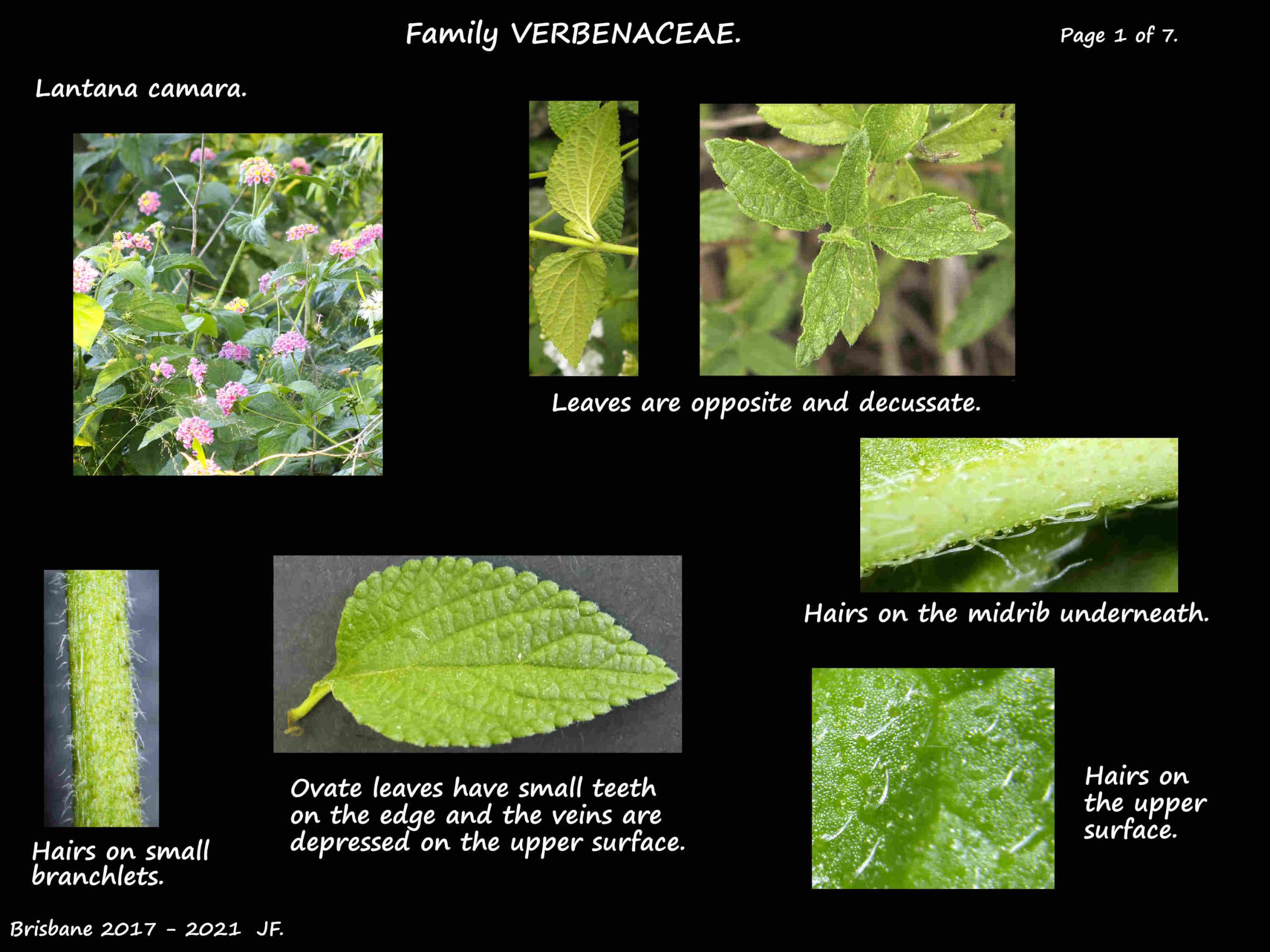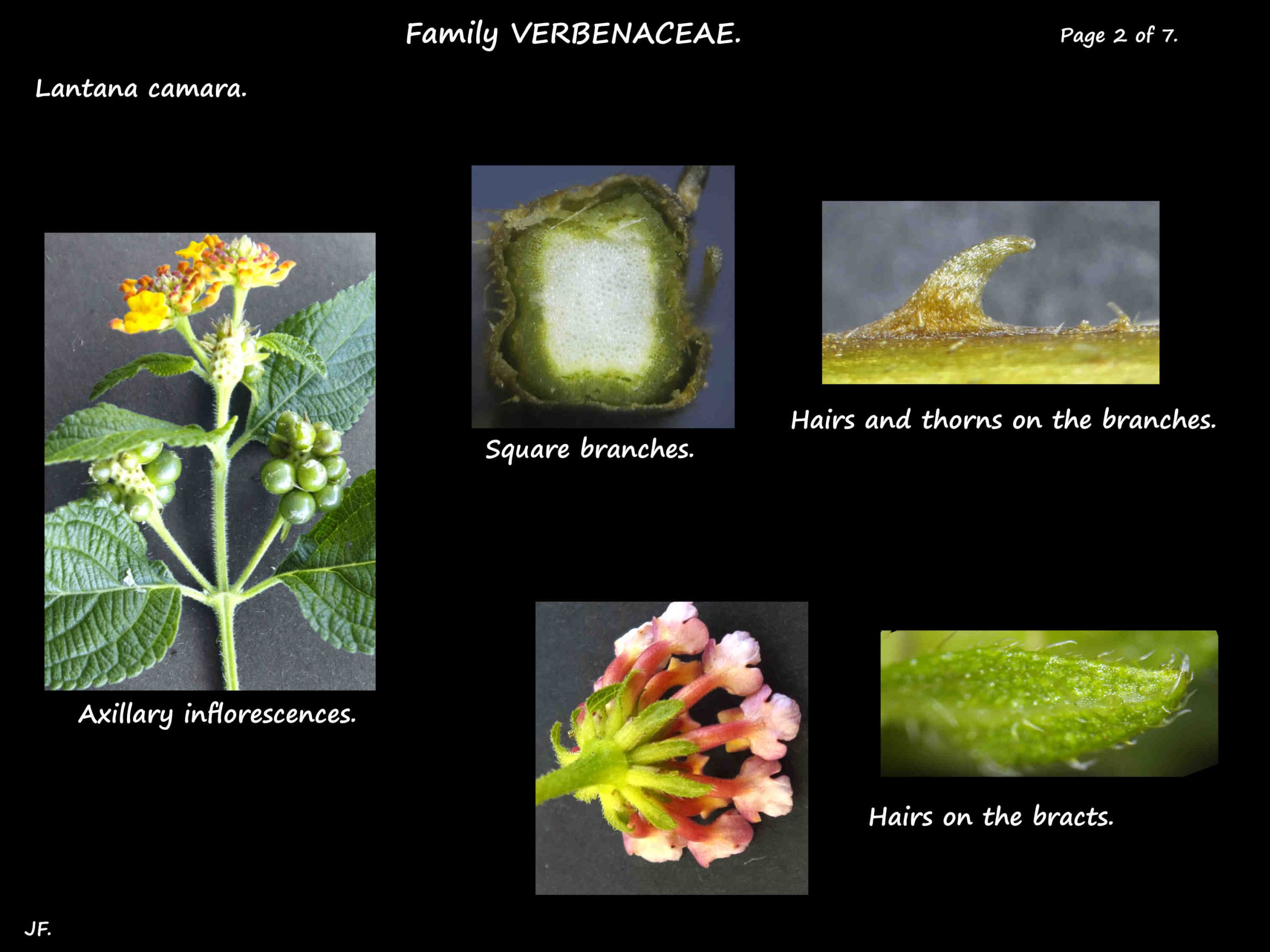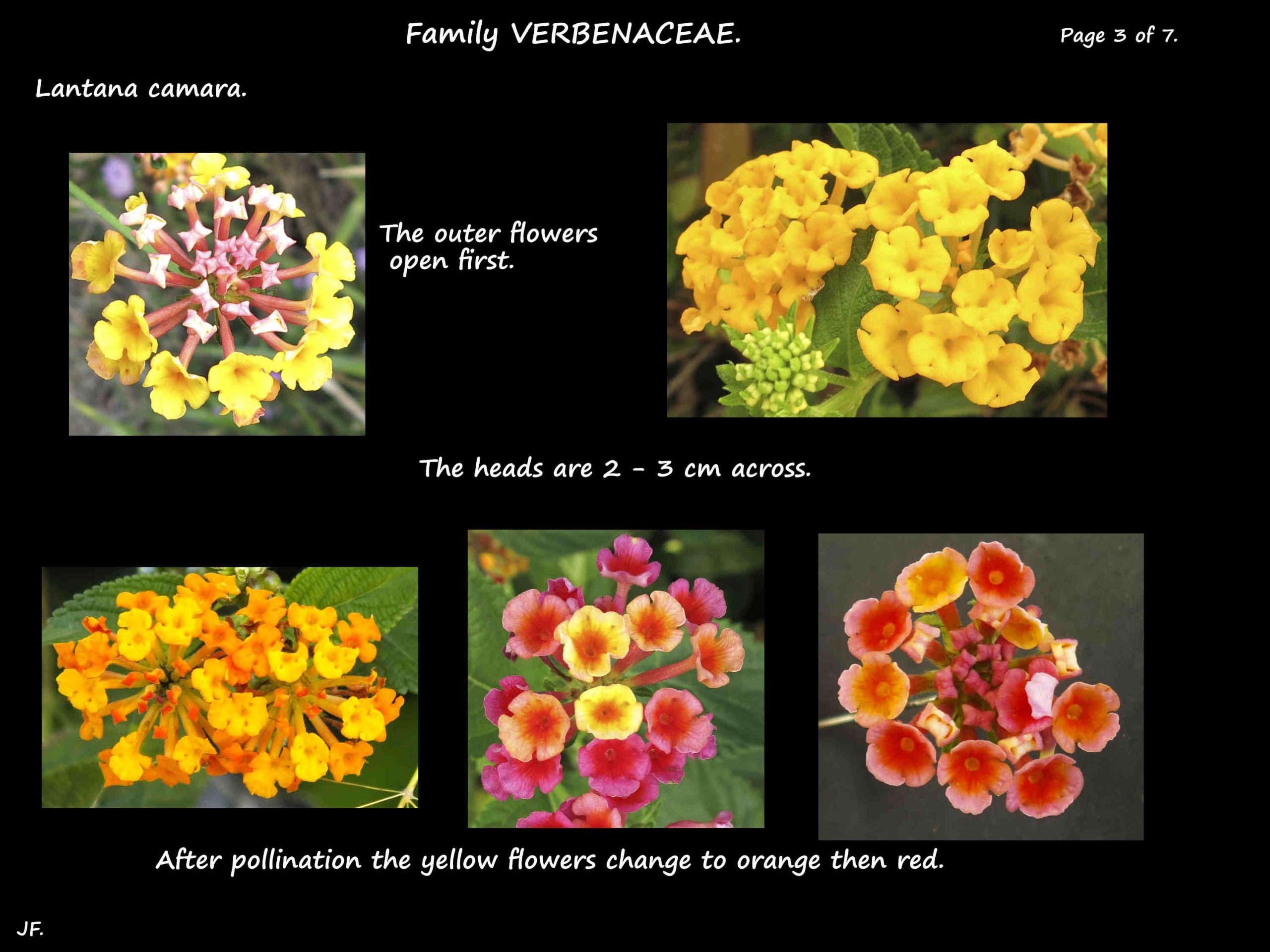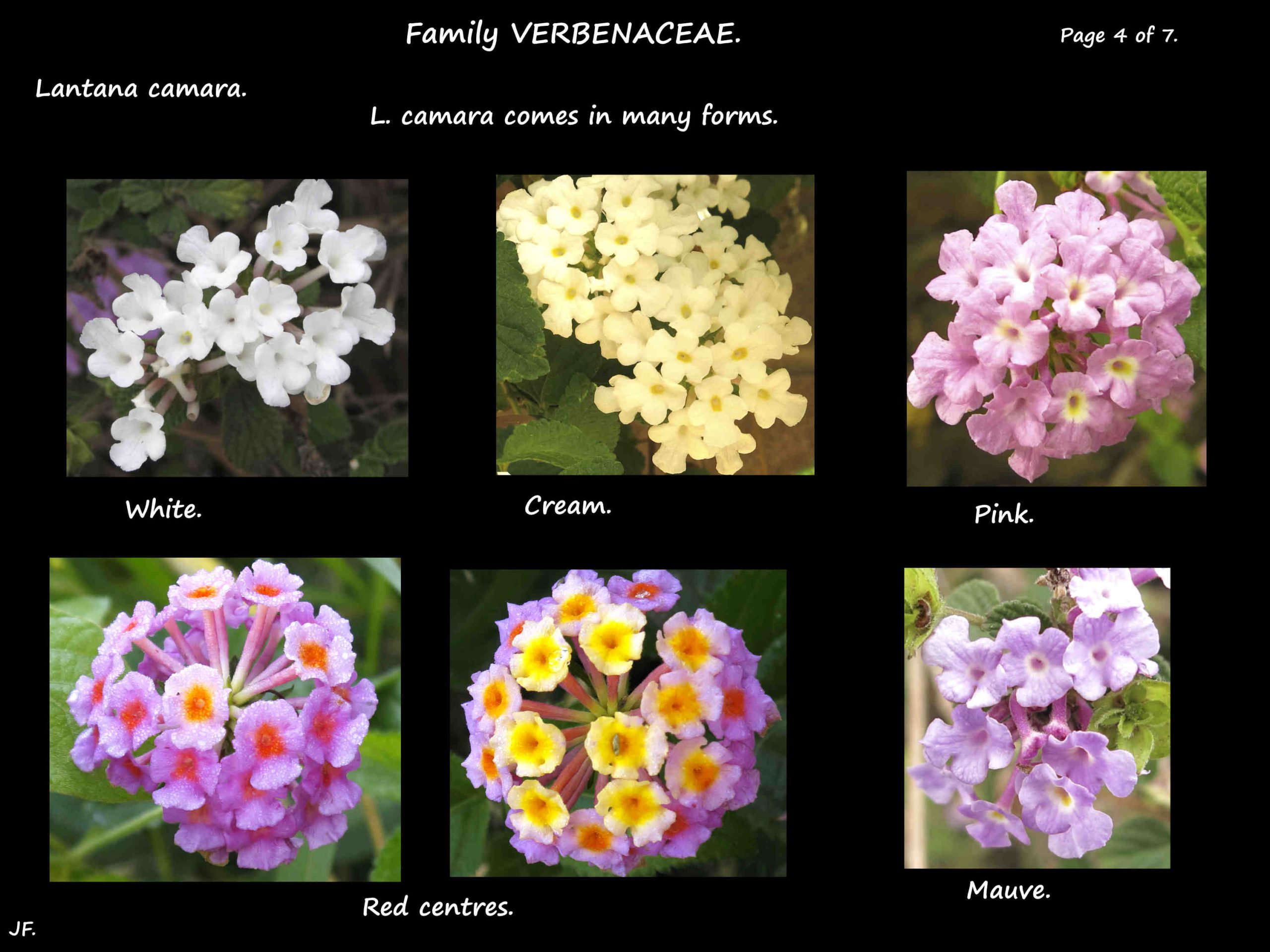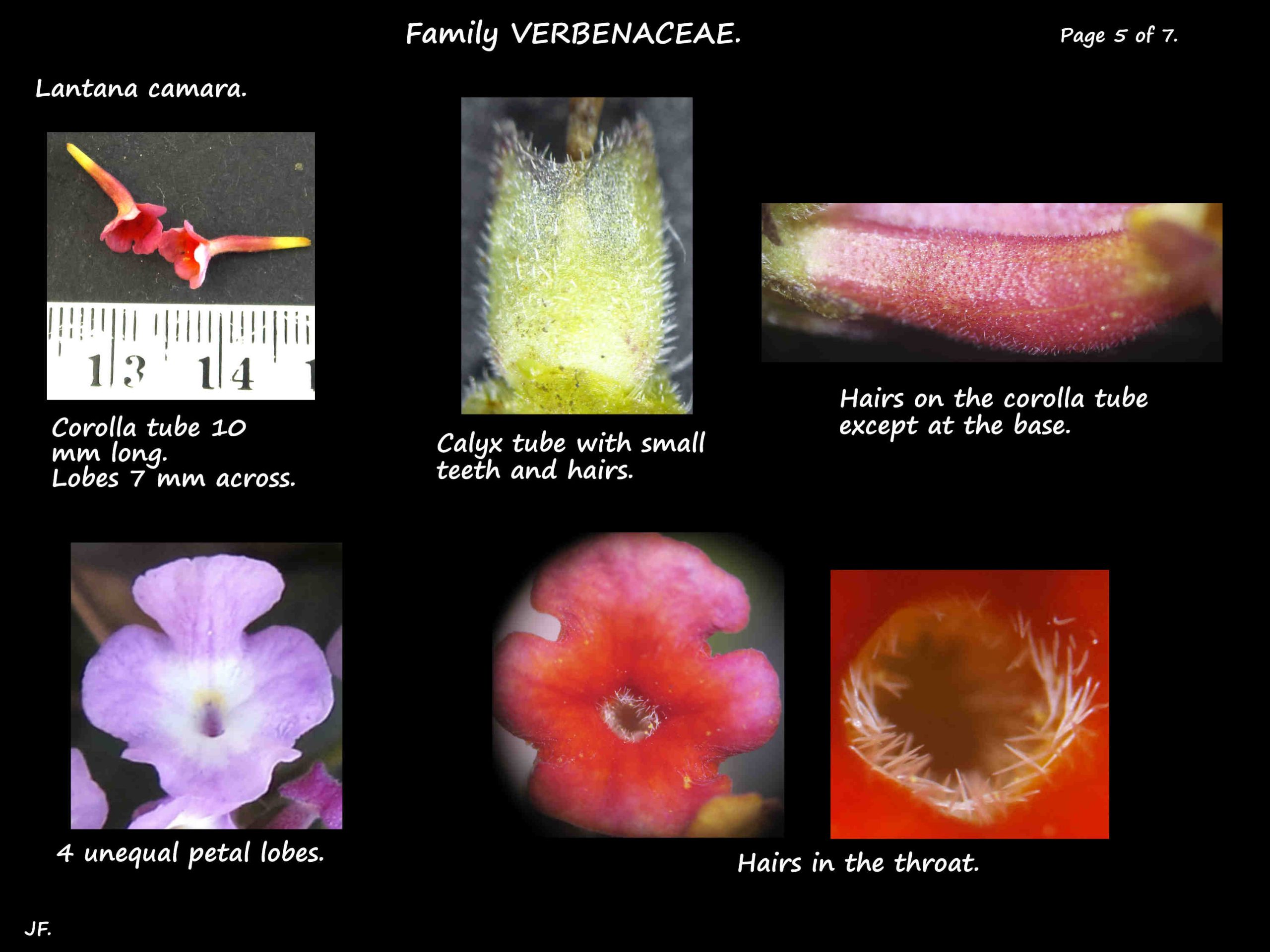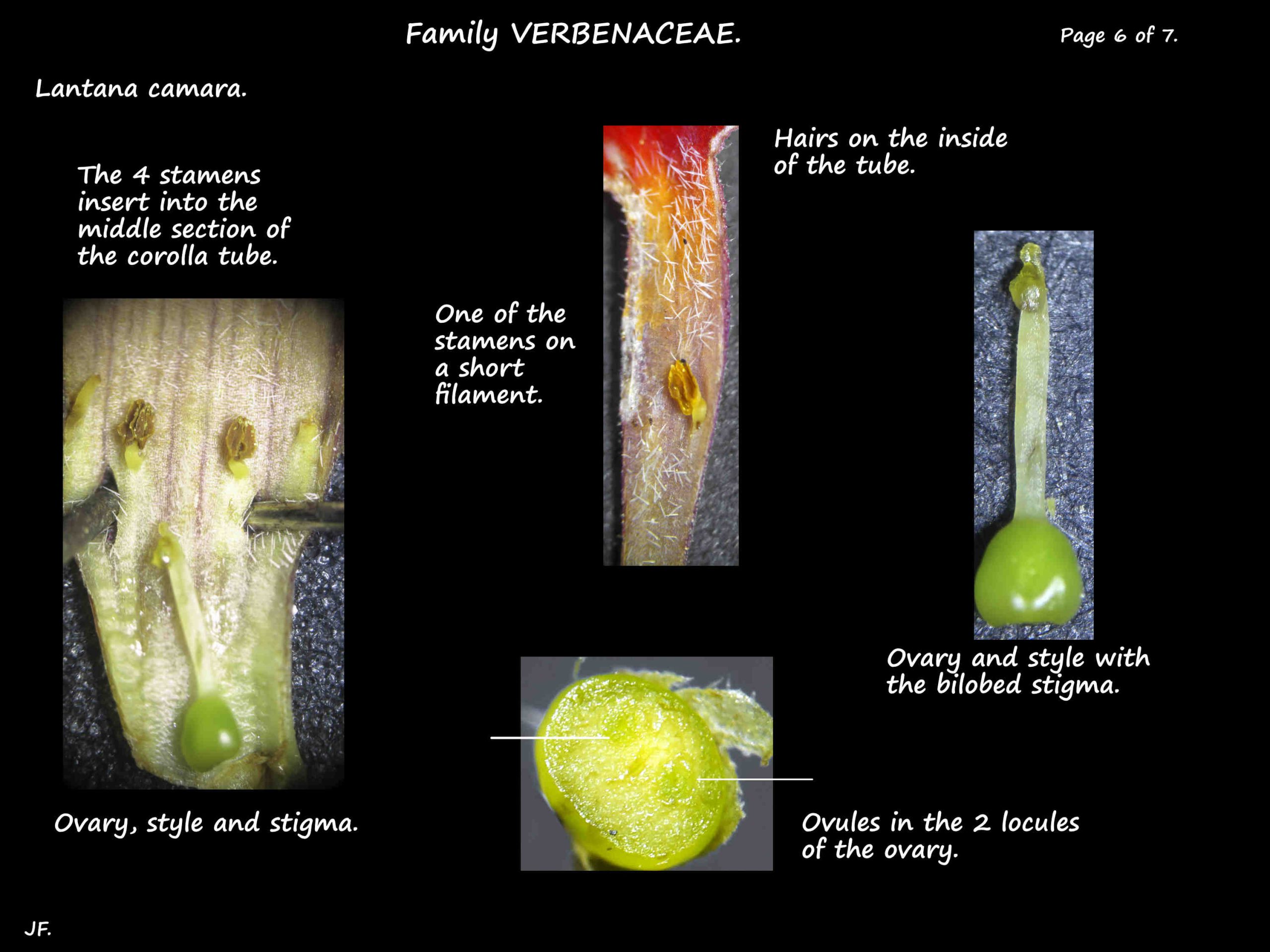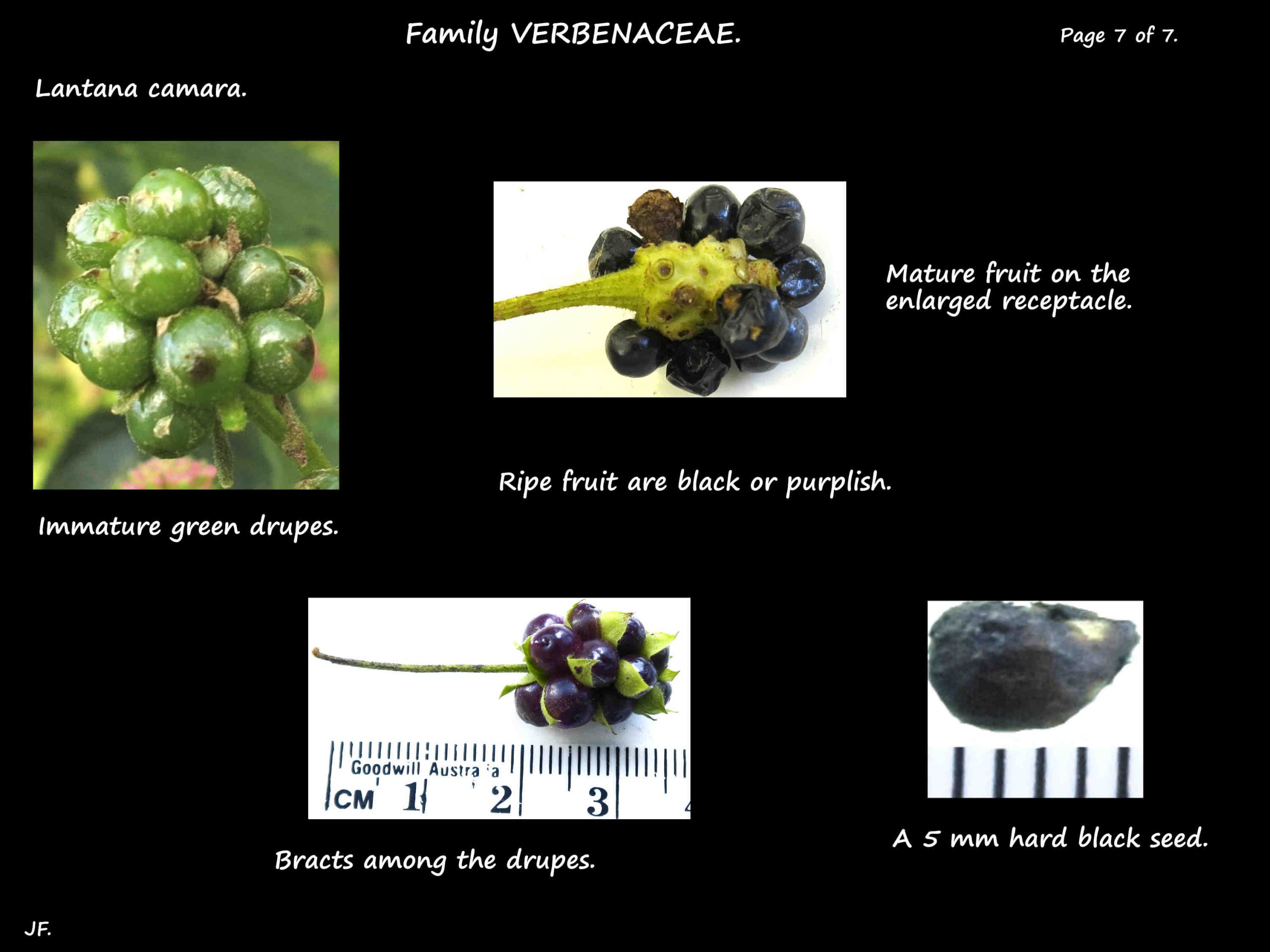Lantana camara.
In Family Verbenaceae, it is from the Americas and is naturalised in Queensland.
Known just as Lantana it is commonly seen in cultivation but is a declared weed.
It can grow as a herb up to 1 m high or a woody shrub forming clumps up to 4 m high.
It can also grow as a vine by scrambling over other vegetation and reaching up to 9 m.
Small branches are 4 angled and there are scattered spines.
The widely ovate leaves, on petioles up to 1.5 cm long, are opposite and decussate.
The toothed blades are up to 10 cm long and 7 cm wide.
The blade forms wings half way down the petiole.
The veins are depressed on the upper surface.
The small branches and leaves are rough due to small hairs and bumps.
The axillary inflorescences are a head of flowers on a stalk up to 4 cm long.
Each head, up to 3 cm across, has many small flower and bracts.
The hairy calyx tube, only 1 to 2 mm long, has small teeth.
There are 4 petals in the corolla with the bases fused into a tube around 12 mm long.
The unequal lobes flare outwards.
There are small hairs on the outer surface of the lobes and the upper part of the tube.
The throat has longer hairs in it and may be a different colour.
L. camira species flowers open yellow then change to orange then red.
The change is stimulated by the deposition of pollen on the stigma.
This leads to an increase in red anthocyanins that mask the yellow carotenoids.
There are 4 stamens inserted in about the middle of the corolla tube.
They are on short filaments and in pairs of slightly different lengths.
There are hairs in the tube around the stamens.
The superior ovary has 2 locules.
The stout apical style has small stigma lobes.
The fruit are roughly globular drupes around 7 mm long.
They are surrounded by the fleshy calyx.
The green drupes mature to a dark purplish-black.
There are many forms of L. camira separated, at least horticulturally, on colour.
They can be white, pink, mauve, magenta or yellow.
Flowers in one head may be of different colours as may the heads on a plant.
Cultivars tend to be more compact shrubs and the flowers are frequently sterile.
The common yellow cultivars are hybrids of L. camira and L. montevidensis.
L. camira ‘Variegata’ has leaves with cream edges.
J.F.
